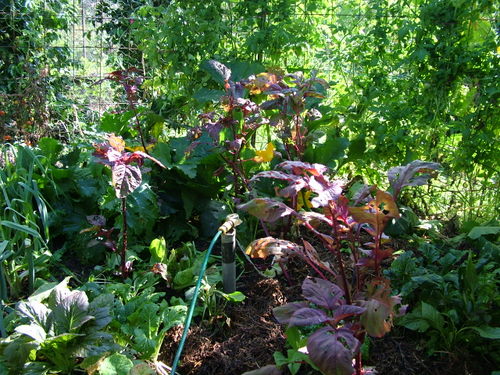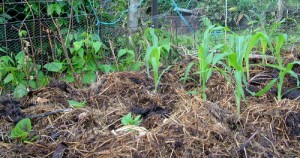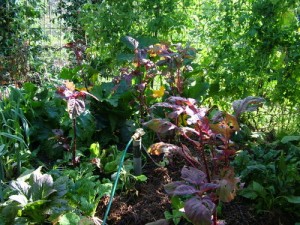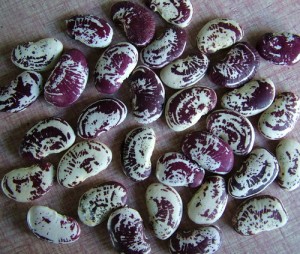I went out and mowed this morning early. Not as early as I would have liked – the mower is noisy and there are neighbours within a hundred metres of the community centre lawn, so I held back till 7.30 am. I’m normally up before 5 these mornings, so it meant I had a couple of hours in the garden and shadehouse before mowing. And still, that gives me a nice hour and a half before 9 am, then another half an hour to unload the mulch and I am in, showered and cool by 9.30.
Next week is predicted to be heavy rain and a nice thick layer of mulch will mean the chooks aren’t squelching around in mud. The garden needs lots of mulch to survive days like this, and I need an hour or two of physical activity. I can spend the whole middle of the day writing now without compunction.
I put sprinklers on when I first got up, and moved them around in those few hours, so that by 9.30 every bed had had a good deep watering. It is days like this that I reap the value of soil with a lot of water holding capacity. Years of adding organic matter pay off in being able to water heavily and have it all sucked up by the soil. Luckily, though it is a much drier year than average, our water storage is good enough now to afford the water. Some years I have just had to watch the garden die on days like this.
We don’t have enough to water all the fruit trees, but I use all the grey water on them. We have a couple of trees full of mangoes just about ripe too. It looked like a bumper year a few months ago but a spell of severe dry made them drop most of the fruit. Still though, there are enough in our seven fruiting trees to make a few year’s supply of green mango pickle and mango chutney and still have more than we can eat.
I have heat tolerant tall climbers – snake beans, indeterminate cherry tomatoes, tromboncino, cucumbers helping to shade beds. In winter and spring, tall climbers are restricted to the south side of beds where they will never shade anything else. But starting in mid-spring I begin planting them with an eye to heat waves, so that they extend around the western side and give the lettuces and rocket and beets and basil a bit of respite from the afternoon sun.
Not many lettuces in. They need a lot of water and still they bolt to seed this time of year. I have a few, of heat tolerant varieties, but my summer salads are not much based on salad greens. This time of year, salads are best based on tomatoes (at their best now) or beans or capsicums or cucumbers. A heat wave sometime about now is so predictable that my garden is pretty clear of the things that are really vulnerable, and the few there are I can afford to sacrifice and replant when the weather changes.
The shadehouse is full of fairly advanced seedlings, each in its own little pot of good compost mixed with creek sand. It is much easier to keep them watered and cool in the shadehouse. I’ve recycled quite a few seedlings over the last month. Germinated them in the seed raising boxes, transplanted them into pots, waited for a spell of the right kind of weather for planting out, recycled them into the seedling raising mix again and planted a new batch of seed when it didn’t happen. There is a small amount of work wasted in doing this, but it saves a lot off work trying to establish seedlings in tough conditions. I’m hoping that the rain predicted for new year will herald a few weeks of good planting weather and I can get all the seedlings in the shadehouse now out and established.
I don’t get frost in my sub-tropical garden, so winter is a good growing season here. It is the frizzle days of summer that are the challenge, when a whole garden can be wiped out in one brutal day. But just like gardeners in frost-prone climates, you develop a range of strategies to work the odds.




If you end up with more mangos than you can eat, why do you have 7 trees? I had such a heavy crop of peaches off 1 tree across November-December despite having thinned most of the buds off. Dealing with glut crop is putting me off planting any more fruit trees even though I have a perfect spot in the garden for it.
This is true Ruth. Fruit trees can bear an astonishing lot. They are seedling trees, and the chooks and geese like them, and we can give a lot away too.